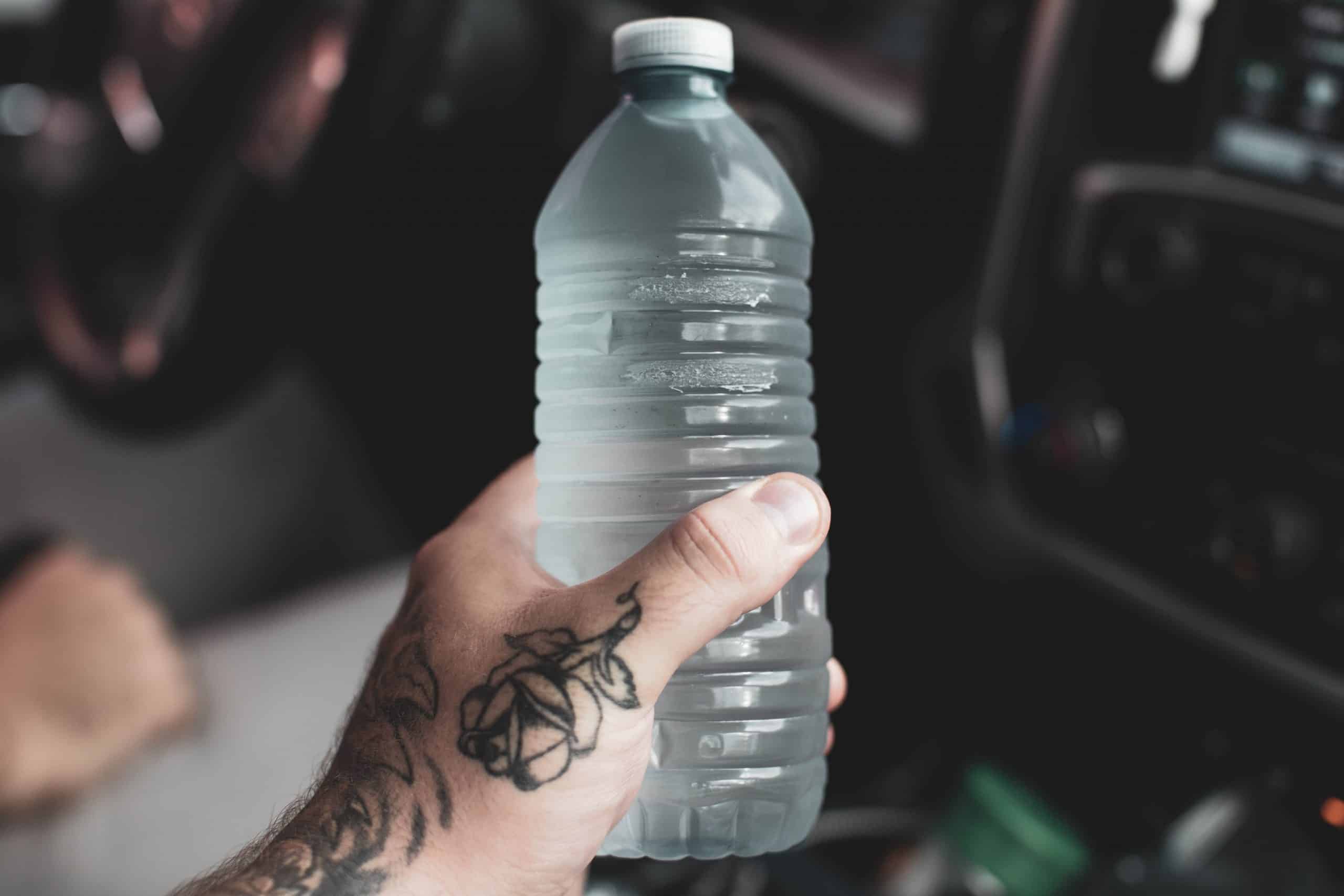Disposable water bottles are just that—disposable.  Still, it feels like a crime against the environment to just toss out a water bottle after a single use. We’re supposed to reduce and reuse before we recycle, right? A perfectly noble commitment to sustainability might urge you to refill an old disposable water bottle over and over before tossing it out. Here’s why that’s a bad idea.
Still, it feels like a crime against the environment to just toss out a water bottle after a single use. We’re supposed to reduce and reuse before we recycle, right? A perfectly noble commitment to sustainability might urge you to refill an old disposable water bottle over and over before tossing it out. Here’s why that’s a bad idea.
1. Washing, refilling, and reusing disposable water bottles degrades the plastic itself.
As the plastic breaks down, it releases harmful chemicals into the water. The main bad guy here is bisphenol A—which you’ve probably heard being called by its nickname, BPA.  But even BPA-free water bottles contain chemicals that mimic the effects of estrogen, potentially sparking a whole range of maladies.
But even BPA-free water bottles contain chemicals that mimic the effects of estrogen, potentially sparking a whole range of maladies.
2. The chemicals in water bottles can cause all kinds of health issues.
Refill an old water bottle too many times and you’ll find BPA and all its harmful buddies swimming around in your hydration sauce. When these chemicals enter your body, they can really mess with your health. Nutritionist Marilyn Glenville, PhD, told Good Housekeeping about all the health concerns that come with exposure to the chemicals found in most plastics.  “Certain chemicals found in plastic bottles can have effects on every system in our bodies,” she said. “They can affect ovulation, and increase our risk of hormonally driven problems like [polycystic ovary syndrome], endometriosis, and breast cancer, among other things.”
“Certain chemicals found in plastic bottles can have effects on every system in our bodies,” she said. “They can affect ovulation, and increase our risk of hormonally driven problems like [polycystic ovary syndrome], endometriosis, and breast cancer, among other things.”
3. As disposable plastic bottles break down, they fill with tiny networks of cracks and fissures that harbor unhealthy bacteria.
Even if you’re not worried about chemical exposure, you probably don’t want to swallow robust colonies of bacteria. The microscopic fissures that develop in old plastic make great homes for germs.  A recent study in the runner’s site Treadmill Reviews found an average bacteria count of more than 300,000 colony-forming units (CFU) per square centimeter. By way of comparison, your dog’s favorite chew toy probably has fewer than 3,000 CFU. So that’s gross. Oh, and those bottles that Treadmill Reviews looked at were actually made of reusable plastic. Given that disposable bottles develop more cracks more quickly, they’re probably even worse.
A recent study in the runner’s site Treadmill Reviews found an average bacteria count of more than 300,000 colony-forming units (CFU) per square centimeter. By way of comparison, your dog’s favorite chew toy probably has fewer than 3,000 CFU. So that’s gross. Oh, and those bottles that Treadmill Reviews looked at were actually made of reusable plastic. Given that disposable bottles develop more cracks more quickly, they’re probably even worse.
This is all plenty alarming, but a body has to remain hydrated, right?
The healthy way to tote your water, Treadmill Reviews concluded, is in a stainless steel bottle with a straw top. For some reason, the straw-top bottle they tested only contained 25.4 CFU. Compare that with the squeeze-top in the study: That thing had 161,971 CFU. Oh, and these weren’t gut-healthy probiotics, either. More than 60 percent of the germs the researchers found in the water bottles were the type that can actually cause illness.  The takeaway is this: Recycle your disposable water bottles. Get yourself a stainless steel reusable water bottle. Wash your water bottle after each use. It’s actually pretty simple. Whatever you do, make sure you stay hydrated. With a nice, clean, reusable steel bottle, you can sip safe in the knowledge that you aren’t risking your health.
The takeaway is this: Recycle your disposable water bottles. Get yourself a stainless steel reusable water bottle. Wash your water bottle after each use. It’s actually pretty simple. Whatever you do, make sure you stay hydrated. With a nice, clean, reusable steel bottle, you can sip safe in the knowledge that you aren’t risking your health.



